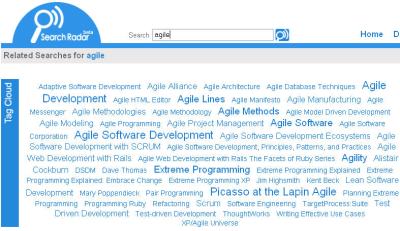Here are my notes for the Creating findable rich media content session at SXSW Interactive. Listen to the podcast for yourself if my haphazard notes are difficult to follow.
- Navigation typically not followable for Flash, etc. Text is embedded, not retrievable by spiders, key text is not prominent or differentiated (even XML).
- Lack of a unique URL hurts your linkage and Google ranking subsequently.
- If content is not coded or tagged correctly you’re not as findable.
- Disney example – their entire site is Flash. You can make Flash search-friendly, navigation is key – just make sure spiders can get through.
- Javascript function detects non-Flash capable browsers, so viewers get primary content (text, anything you can add to an HTML page).
Samsung example – Flex and AJAX for 20,000 SKUs of different tv models, used XML site maps to get all the deep links (which were previously unfindable).
Economist has a video site – 1 page for each video linked from master.
Tubemogul lets you upload videos in bulk with good tags, good titles.Not always rich media that’s the problem, but the execution, making sure you think about search and findability early on in the project, and tag early.
Sometimes content goes up only for a month and then comes back down, so search is irrelevant. Plus, if you want a rich experience, then you don’t worry about search – you actually want fewer people to have that rich experience.
Creating a findable strategy – or make your content find your users. (Now that is an interesting concept to ponder for technical writing.)
Fiat website – Flash-based
Layered approach – CMS backend with XML that transforms either to HTML or to have Flash consume the content. This approach could be mistaken for a form of cloaking, make sure intent is legit and alternative is a faithful representative of Flash content.
Other SEO suggestions – break up container, create deep links from blogs to specific content allowing inbound links.
Other findable strategies
Never ending friending report 2007
Asked people ages 14-29, if you had 15 minutes of spare time, what are your top two choices for using that time? Social networking or talking on cell phone were the top answers.
Target example (Adweek article) -Back to College campaign on Facebook
2-3 months lifespan, so this is an example of not worrying about findability, but rather ensuring that your content finds your users. How does Target create a dialogue with college students; one that would inspire and support their transition into college life?
Give freedom to kids to discuss produts, within their own community.
Personalized checklists sent to mobile.
Funny side note – I think this Target campaign was a nominee of one of the “Suxors” as one of the worst social media campaigns in 2007.
Consider everyone’s accessibility – mobile phones, text to speech, and so on.
Google webmaster tools – google.com/webmaster – these are relatively new.
Q: What is the biggest challenge coming up?
A: Something should be invented to work in the authoring stage to give info to the search engines.
Q: What about exclusionary methods? They don’t understand the ping pong effect something that’s cool will come around everywhere? His clients don’t want to pay for the bandwidth and so on.
A: I don’t think they actually answered this other than to say viral is always good.
Q: What about microformats?
A: The Google panelist said it needs to get more standard and have more attached to the content. He did point to http://www.google.com/experimental/.

